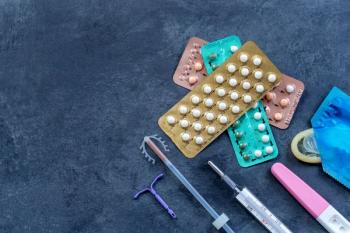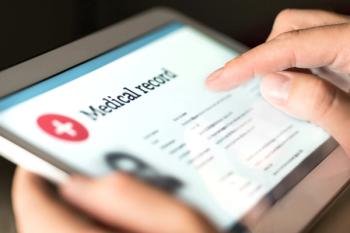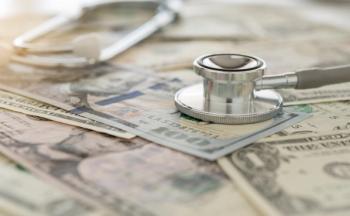
Debunking the Myths of At-Home Drug Testing
In 2017, widespread misuse of both prescription and nonprescription opioids led the Department of Health & Human Services to declare a public health emergency and announce a five-point strategy to combat the crisis. In addition to improving access to treatment and recovery resources, promoting use of agents such as naloxone and providing better support on pain addiction and research, as well as better practices for pain management, part of the plan included strengthening the understanding of the epidemic through surveillance and testing.1
At-home drug tests can help detect whether one or more prescription or illegal drugs, such as marijuana, cocaine, and opiates, are present in urine or hair.
According to information on the Food and Drug Administration’s (FDA) website, “the at-home testing part of the drugs of abuse test is fairly sensitive to the presence of drugs ... This means that if drugs are present, you will usually get a preliminary (or presumptive) positive test result.”2
FDA officials note on their website that many things “can affect the accuracy of at home tests, including (but not limited to): the way you did the test, the way you stored the test or urine, what the person ate or drank before taking the test, and any other prescription or over-the-counter drugs the person may have taken before the test.”
As the public conversation about testing for drug abuse spreads, more and more patients may seek the advice of pharmacists on at-home drug testing. Pharmacists are uniquely qualified to engage in conversations about home-based drug testing and arm the public with the information they need.
Survey Results
Recently, Pharmacy Times® surveyed 145 readers about home-based drug tests. Approximately 79 percent of the respondents, including pharmacists from chain drugstores, mass retailers, supermarkets, independents and hospitals, said they had received questions at some point in their careers from customers about drug testing. The majority of customers inquiring about drug-testing products, 74 percent, were family members (parents/guardians or other family members), followed by self-testers, at 54.8 percent.
Although many of the survey respondents (52 percent) said they had no hesitation in discussing drug testing, 36 percent felt they did not have enough education to support a conversation about these tests. An additional 9 percent of the surveyed pharmacists noted that they were sensitive to stigmas associated with testing. Survey respondents revealed that a lot of questions from customers centered on accuracy, the list of drugs identified and the ability to “cheat” results. Here are some common myths related to drug testing that arose in the survey — and some facts debunking those myths.
MYTH: Different methods of drug testing are comparable in accuracy.
FACT: According to the FDA website, regarding urine testing, “no drug test of this type is 100% accurate. There are several factors that can make the test results negative even though the person is abusing drugs. First, you may have tested for the wrong drugs. Or, you may not have tested the urine when it contained drugs. It takes time for drugs to appear in the urine after a person takes them, and they do not stay in the urine indefinitely. It is also possible that the chemicals in the test went bad because they were stored incorrectly or they passed their expiration date.” FDA officials also stress on their website the importance of laboratory confirmation, writing, “If you get a preliminary positive result, you should send the urine sample to the laboratory for a second test. It is very important to send the urine sample to the laboratory to confirm a positive at-home result because certain foods, food supplements, beverages, or medicines can affect the results of at-home tests. Laboratory tests are the most reliable way to confirm drugs of abuse.”2 It is important to discuss what type of information the customer is hoping to discover. Many urine tests will home in on recent drug use, with an approximately four-day look-back period. Hair testing offers results up to 90 days back and in quantitative measurements, to show levels of drug use. These quantitative results provide an important understanding of how much of each positive result was found in the person’s system. In the case of illicit drugs, this information shows how much was being used. With prescription drugs, quantitative results allow a person to monitor drug use versus drug abuse. In the survey results, pharmacists indicated that accuracy was by far the most important factor for patients when selecting a testing product.
MYTH: Drug testing cannot be used as a prevention tool.
FACT: Some 22 percent of surveyed pharmacists agreed that testing could be used as a way to “create conversations before abuse starts,” and 29 percent felt that these tests can help diagnose a previously undiagnosed issue. In addition, a study by the National Center for Education Evaluation and Regional Assistance, which examined seven school districts that were awarded grants in 2006 by the U.S. Department of Education, demonstrated that 16 percent of students subjected to mandatory drug testing at their school reported using substances in the previous 30 days, while 22 percent of students without such a program reported use in the prior 30 days.3 Using hair tests that show 90 days back, patients can create a prevention program at home to measure drugs for a full year through only four tests.
MYTH: It is easy to cheat on at-home drug tests.
FACT: A quick internet search for “cheating drug tests” brought up more than 34 million results, with the take-home message from several of these searches largely being the same: Cheating doesn’t work and, in many cases, can land the “cheater” in hot water with prospective employers or law enforcement. One popular method is using another person’s urine to cheat. Another is the use of synthetic urine, which has been in the news lately. Thus far, at least 18 states have banned or attempted to ban synthetic urine, which is often strapped to the legs of people undergoing tests in court settings to alter the results. Popular attempts for cheating hair tests often employ detox hair products, but none of them have been shown to be clinically effective at altering the results.
MYTH: Urine drug tests detect a larger number of drugs than other testing methods.
FACT: With urine, you can test for anywhere from four to 12 drugs. However, a total of 14 different drugs can be detected with the hair testing method.
Pharmacists can, and should, arm their patients with information about drug use and potential deterrents to abusive behavior. Increases in cocaine, methamphetamine and marijuana use have led to the highest rates of drug use by the American workforce in a decade, 4.2 percent, according to a recent analysis by Quest Diagnostics.4 That analysis also showed variations in which types of drugs are being abused in different parts of the country, with methamphetamine positivity skyrocketing in the midwestern and southern United States. Furthermore, perhaps not surprisingly, marijuana positivity is rising in states that have recently enacted recreational use. Staying on top of which drugs are most frequently abused in your particular community, arming your patients with the information they need on how to prevent falling into the trap of abusing drugs and providing tools that your patients need, such as naloxone should they fall prey to those traps, can foster an important relationship with your customers and potentially save their lives.
References
- Strategy to combat opioid abuse, misuse, and overdose. Department of Health & Human Services
https://www.hhs.gov/opioids/sites/default/files/2018-09/opioid-fivepoint-strategy-20180917-508compliant.pdf Accessed March 20, 2018. - Drugs of abuse home use test. Food and Drug Administration website.
fda.gov/MedicalDevices/ProductsandMedicalProcedures/InVitroDiagnostics/HomeUseTests/ucm125722.htm . Updated September 27, 2018. Accessed March 20, 2019. - The effectiveness of mandatory-random student drug testing. Institute of Education Services website.
ed.gov/ncee/pubs/20104025/index.asp. Accessed March 20 , 2019. - Workforce drug positivity at highest rate in a decade, finds analysis of more than 10 million drug test results [news release]. Secaucus, NJ: Quest Diagnostics; May 8, 2018.
questdiagnostics.com/2018-05-08-Workforce-Drug-Positivity-at-Highest-Rate-in-a-Decade-Finds-Analysis-of-More-Than-10-Million-Drug-Test-Results . Accessed March 20, 2019.
Newsletter
Pharmacy practice is always changing. Stay ahead of the curve with the Drug Topics newsletter and get the latest drug information, industry trends, and patient care tips.















































































































































